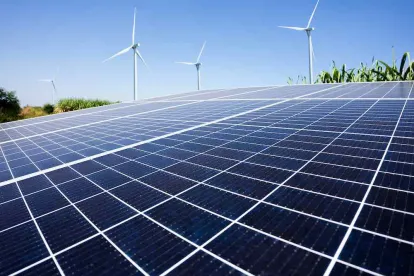In December 2021, President Biden signed the UFLPA into law to restrict the import of goods mined, produced, or manufactured, in whole or in part, using forced labor from the Xinjiang Uygur Autonomous Region (XUAR), which we discussed here. A key feature of the law was its focus on polysilicon imports as a high-priority sector for enforcement. The law required U.S. Customs and Border Protection (CBP) to implement the UFLPA’s requirements starting in June 2022. The implementing task force’s 2023 annual update reports that in the last year or so the CBP has examined for enforcement action more than 4,000 shipments valued at over $1.3 billion. The update also indicates the U.S. government is increasing funding and resources to further support enforcement of the UFLPA and expand its focus from high-priority sectors to additional products and sectors, including lithium-ion batteries.
With the implementation of the UFLPA reaching maturity and continuing to expand, we have seen the solar industry respond and adapt to the UFLPA and forced labor concerns more broadly in several ways:
-
Due Diligence of Overseas Suppliers: The rebuttable presumption standard adopted under the UFLPA makes it nearly impossible to import goods linked to any of the companies listed on the UFLPA Entity List. Many original equipment manufacturers (OEMs) have adapted their supply chain to the stricter regulatory environment, especially the larger foreign OEMs. Given the substantial risks involved, many developers and contractors in the U.S. have begun implementing additional controls and compliance programs. The CBP and industry groups provide a lot of resources that have been helpful in developing these internal programs. For example, the CBP’s Operational Guidance for Importers outlines several processes that companies can implement to help manage compliance with the UFLPA and other human-rights-based regulations (including WROs). Key features of these types of programs include supply chain mapping, supply chain monitoring, development of traceability audit programs, engagement of third-party investigators/auditors to verify compliance, and creation of internal codes of conduct.
-
Ongoing Reporting and Monitoring Programs: Given the constantly changing enforcement environment, purchasers are increasingly implementing rolling (rather than one-time) supply chain traceability audits. In some negotiations, initial disclosure of the balance of materials suppliers and representations regarding the origin of raw materials and components, with approval rights for any changes, has proven an effective management tool for evaluation of forced labor risk (with the benefit of providing additional certainty around potential tariffs or duties). Ongoing concerns within CBP regarding traceability of Chinese polysilicon have led many developers and contractors to avoid not only XUAR but all polysilicon from China – an additional practical challenge given the outsized demand for such polysilicon.
-
Supply Agreement T&Cs: The heightened risk environment created by the UFLPA has added to the challenges in an already-constrained supply chain. Purchasers are increasingly seeking additional assurance and security from OEMs, while OEMs are increasingly insisting on relief for border delays and importation-related impacts. The OEM responses are driven by significant losses in 2022 (in both port demurrage costs, legal costs, and liquidated damages for delayed deliveries), and uncertainty surrounding future CBP enforcement measures, as well as retaliatory laws and requirements implemented by the Chinese government, which can result in civil and criminal penalties for OEMs based in, or conducting significant business in, China.
The current uncertainty on import restrictions has created a more complex risk environment for the solar industry. Where we have seen companies effectively navigate these troubled waters, they have been proactive in:
-
Engaging early and often with their OEM counterparties;
-
Developing rigorous internal protocols to monitor and manage their supply chain;
-
Implementing traceability audits overseen by qualified and experienced consultants;
-
Procuring alternative, backup sourcing for modules and adequately securing their purchases; and
-
Effectively shifting risk of non-performance to downstream parties or OEMs.





 />i
/>i

